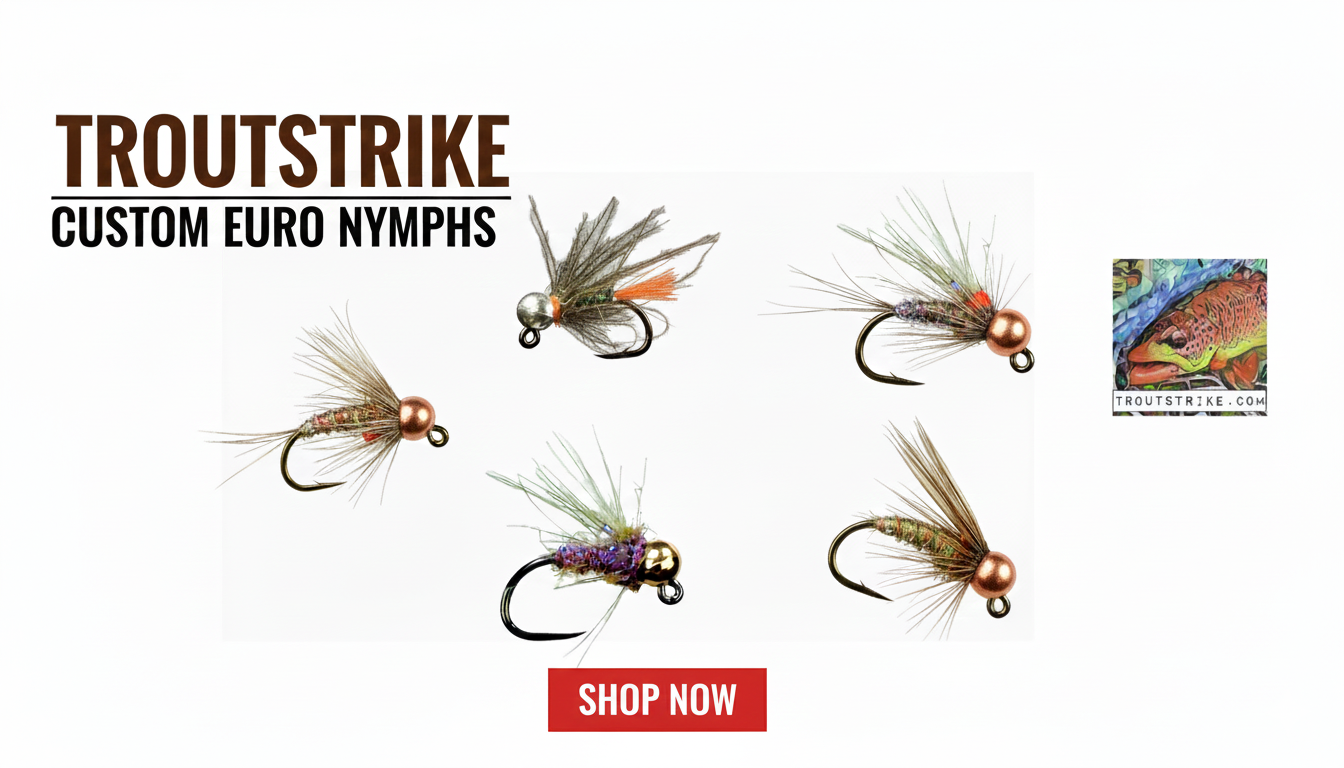The Bare Bones Stone: A Simple, Effective Stonefly Pattern
When it comes to fly fishing, stonefly patterns are a must-have in any angler’s box. As one of the four main insect categories we try to replicate, stoneflies are often complex and time-consuming to tie. But that doesn’t have to be the case. Enter the Bare Bones Stone, my go-to simplified stonefly pattern, that you can tie in under five minutes. Learn how to tie the easiest stonefly nymph that won’t keep you at the vise all day!
In this post, I’ll walk you through how to tie this pattern and explain why it’s become such a reliable choice for me—especially in Euro-style nymphing.
Why the Bare Bones Stone?
Stoneflies are typically large and complicated, but I created the Bare Bones Stone to keep things minimal. This pattern is quick to tie, uses very few materials, and is effective in a variety of sizes. Stoneflies don’t always have to be huge; I tie these from size 10 down to 14, using slotted tungsten beads between 2.8 mm and 3.2 mm for weight. This lets me quickly fill a box and always have a reliable stonefly pattern on hand for a range of water conditions.
Additionally, the Bare Bones Stone is highly versatile. You can mix up the dubbing colors to create different variations, or change the leg colors to add that little extra “trigger” trout often go for.
Fishing the Bare Bones Stone
I like to fish this pattern primarily at the point of my Euro-nymphing rig. Its weight helps anchor the rig, allowing me to fish smaller, more delicate patterns on the dropper when I think picky trout might be more likely to eat. But don’t let its simplicity fool you—this fly catches trout on its own as well.
How to Tie the Bare Bones Stone
Here’s the step-by-step breakdown of how to tie the Bare Bones Stone. If you’re a visual learner, check out the video where I show the entire process from start to finish.
Materials You’ll Need:
- Hook: Hanak H 450 BL (Size 10-14) – Buy here
- Bead: Fulling Mill Slotted Tungsten (3.0 mm – 4.0 mm) – Buy here
- Thread: UTC 70 (Black) – Buy here
- Ribbing: UTC Ultra Wire (Gold-Medium) – Buy here
- Legs: Wapsi Sili Legs – Buy here
- Body Dubbing: Wapsi Natural Fur Hares Mask – Buy here
- Thorax Dubbing: Trout Hunter Golden Brown – Buy here
- Wing Case: Loon Fly Finish Black – Buy here



Step-by-Step Instructions:
- Load the Hook: Place a Hanak 450 jig-style hook in your vise. I’m using a size 12 with a 3.8 mm slotted tungsten bead. You can go up to a size 10 or down to a size 14, depending on your preference.
- Start Your Thread Base: Begin wrapping UTC 70 thread just behind the bead and stop before the hook bend. Thread color isn’t too critical here since it’ll be covered.
- Add the Tail: Tie in a single strand of rubber leg material at the tail, separating it into two sections. Secure with a few turns of thread, then wrap back to the bead.
- Insert the Wire: Slide a piece of gold Ultra Wire into the bead slot for ribbing. This will also add some segmentation and weight.
- Dub the Body: Create a thin dubbing noodle with light hare’s mask dubbing. Apply small amounts evenly to form the body.
- Rib the Fly: Counter-wrap the Ultra Wire over the dubbed body to create segmentation. This also adds durability to the fly.
- Build the Thorax: Use Golden Brown dubbing to create a small thorax behind the bead. Don’t overdo it—this fly is meant to stay slim.
- Add the Legs: Tie in a long strand of Sili Legs on one side of the fly. Swing the material around the front of the bead and tie it on the other side, creating a loop.
- Finish the Thorax: Apply another small layer of dubbing to cover the front of the thorax. Use a whip finish to secure your thread, hiding it under the dubbing.
- Form the Legs: Snip the loop in the middle to create two legs on each side of the fly, then trim them to your desired length.
- Final Touch: For the wing case, add a drop of black UV coating over the thorax. If you don’t have black UV, use a Sharpie and cover it with clear UV.









Why This Pattern Works
The Bare Bones Stone is effective for several reasons. First, its simplicity means it imitates the essential features of a stonefly nymph without getting too bulky. Second, the rubber legs provide that lifelike movement that can trigger strikes. Lastly, the use of heavy tungsten beads ensures it gets down quickly to where the fish are feeding.
Whether you’re an experienced tier or just starting, the Bare Bones Stone will quickly become a staple in your fly box. Feel free to experiment with colors and sizes to suit your local waters!
Stay Connected with TroutStrike.com
Follow TroutStrike.com on Instagram and Facebook @troutstrike for daily fly fishing tips, updates, and behind-the-scenes content.
Don’t forget to check out our YouTube channel for fly tying tutorials, nymphing techniques, and more. Subscribe and join the TroutStrike community today!

Thanks for reading! Spend more time on the water!
*Make sure to leave a comment below!
Have a great day!
Jeff Smecker






One thought on “How to Tie the Easiest Stone Fly Nymph”